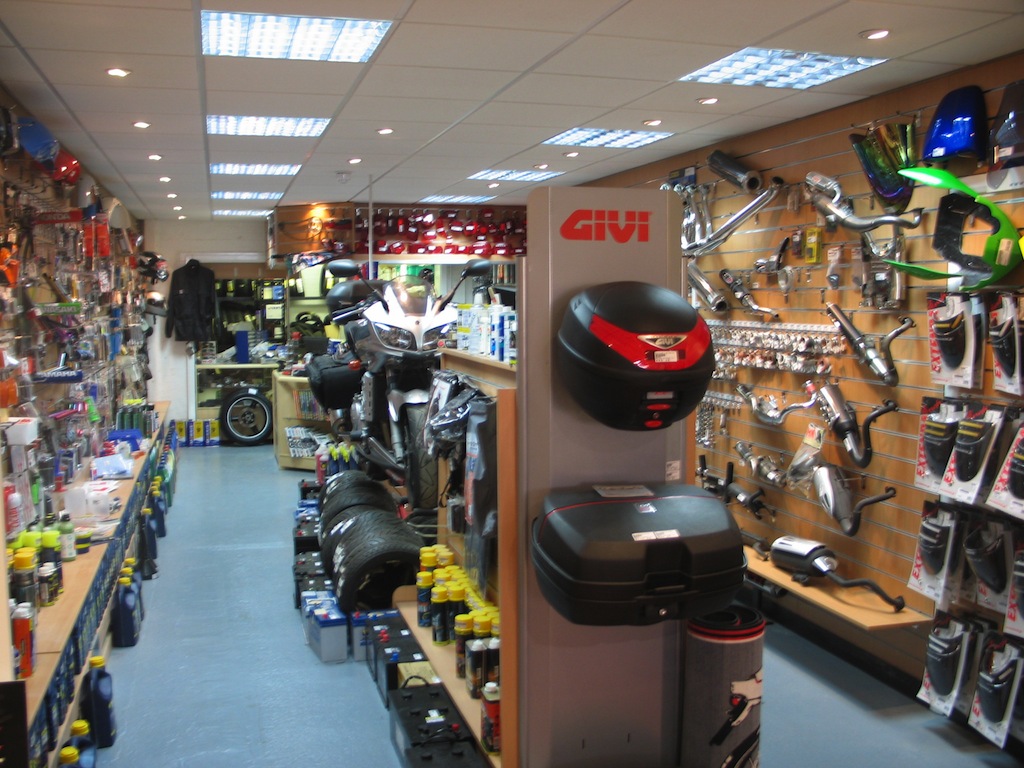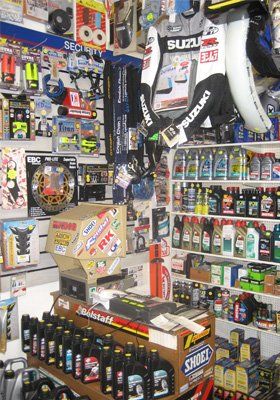Important Motorcycle Parts NZ for Peak Performance and Safety
Important Motorcycle Parts NZ for Peak Performance and Safety
Blog Article
Recognizing the Important Parts of a Bike: A Comprehensive Guide for Lovers
For motorbike fanatics looking to boost their riding experience and ensure their bikes run smoothly, understanding the crucial elements of a motorcycle is extremely important. Each aspect, from the engine's elaborate workings to the essential role of the braking systems, not just impacts efficiency yet also security and comfort.
Engine Parts

The camshaft plays an essential function in regulating the timing of the engine's valves, guaranteeing the specific opening and closing necessary for reliable fuel and air consumption, along with exhaust expulsion. This timing is vital to maintaining optimal engine efficiency and effectiveness. In addition, the carburetor or fuel shot system, depending upon the bike model, is accountable for blending air with fuel in the appropriate proportion for burning.
The air conditioning system, either air or liquid-based, functions to keep the engine's temperature within operational limits, avoiding overheating and making sure durability - moto parts nz. Each component, meticulously developed and integrated, adds to the smooth operation of the engine, specifying the motorcycle's power result and total efficiency
Transmission System
Indispensable to the motorcycle's functionality, the transmission system ensures reliable power transfer from the engine to the wheels. This system consists of numerous essential parts, consisting of the clutch, gearbox, and last drive, each playing a vital role in equating the engine's power into motion. The clutch, usually operated by a hand lever, offers to involve and disengage the engine from the transmission, enabling for smooth equipment changes and regulated acceleration.
The transmission, typically referred to as the transmission correct, consists of a collection of equipments that bikers can by hand move via to change the bike's speed and torque result. These gears are organized in a sequence that makes it possible for the motorbike to accelerate efficiently and preserve optimum engine performance throughout various speeds. Most motorbikes utilize a consecutive transmission, requiring the motorcyclist to shift gears in a predetermined order.
Braking Devices
While understanding the transmission system is vital to using a motorbike's power, just as essential is the capability to manage and quit that power properly, which is where braking systems enter play. Brakes are important for security and efficiency, giving the biker with the essential control to navigate numerous terrains and conditions. Normally, motorcycles feature two kinds of stopping systems: disc brakes and drum brakes.
Disc brakes are much more common in modern-day motorcycles because of their remarkable performance. They consist of a brake disc, caliper, and pads. When turned on, the caliper squeezes the brake pads versus the rotating disc, transforming kinetic power right into warm, thereby slowing the wheel. This system provides far better warm dissipation, regular performance, and enhanced quiting power, especially in wet problems.
Alternatively, drum brakes, though much less common, are still discovered in some bikes. They work by pressing brake footwear against the inner surface area of a drum affixed to the wheel. While normally much less efficient in heat dissipation and stopping go to my blog power, drum brakes are less complex and extra cost-effective.
Recognizing these braking systems' nuances enables riders to maintain their motorbikes effectively and appreciate the engineering that makes certain efficient and secure stopping.
Suspension and Steering
Suspension and steering systems are important elements that significantly influence a motorbike's handling and ride comfort. The suspension system, containing forks at the front and shock absorbers at the back, absorbs road abnormalities, improving security and control. Front forks, typically telescopic or inverted, compress and rebound to minimize impacts, while back shock absorbers preserve tire call with the roadway, critical for grip and safety and security.
Guiding, centered around the handlebars, links the biker to the motorbike's directional control. The guiding head bearings guarantee smooth operation, allowing exact maneuverability. Appropriate placement and upkeep of these bearings are vital for foreseeable guiding action and reducing motorcyclist fatigue.
The suspension's adjustability is one more critical aspect; preload, damping, and rebound setups allow modification to fit numerous riding styles and problems. This versatility is necessary for optimizing performance, whether navigating metropolitan roads or taking on rugged routes. Developments like digital shock absorber provide real-time modifications, enhancing adventure high quality throughout varied surfaces.

Electrical Solutions
After ensuring a smooth and controlled ride through efficient suspension and guiding systems, focus turns to the electric systems, a pivotal aspect of contemporary motorcycles. These systems play a vital duty not only in starting the engine however additionally in powering different parts that improve the capability and security that site of the motorcycle.
At the heart of a bike's electric system is the battery, which stores electric power necessary for starting the engine and powering complementary systems - motox parts nz. The generator or generator, coupled with the rectifier-regulator, ensures the battery stays charged while the motorbike is in operation, converting power right into electrical energy and maintaining voltage levels
The ignition system, one more essential part, is in charge of firing up the air-fuel mix in the engine's cylinders. Modern motorbikes often utilize an electronic ignition system, using greater performance and dependability compared to standard systems.
Lighting systems, including fronts lights, tail lights, and indicators, are additionally vital, ensuring exposure and security for the cyclist. Extra digital parts such as sensors, control systems, and displays add to sophisticated attributes like gas injection management, anti-lock braking systems (ABS), and digital dashboards, further enhancing the riding experience.
Verdict
A detailed comprehension of a motorbike's crucial elements, consisting of the engine, transmission system, braking devices, suspension, steering, and electric systems, is crucial for enthusiasts intending to optimize comfort, safety and security, and performance. Proficiency of these elements permits for educated choices regarding maintenance and upgrades, eventually enhancing the check this riding experience. By incorporating this expertise, riders can guarantee their bikes run at peak efficiency and dependability, therefore taking full advantage of both satisfaction and long life of their lorries.
For bike fanatics looking to boost their riding experience and guarantee their bikes run efficiently, understanding the necessary elements of a motorcycle is vital.Integral to the bike's capability, the transmission system ensures effective power transfer from the engine to the wheels.While understanding the transmission system is crucial to harnessing a motorbike's power, just as important is the capability to manage and stop that power successfully, which is where braking mechanisms come right into play. Commonly, motorcycles feature two types of braking systems: disc brakes and drum brakes.
A thorough understanding of a motorbike's necessary components, consisting of the engine, transmission system, stopping systems, suspension, steering, and electric systems, is indispensable for lovers aiming to maximize efficiency, convenience, and security.
Report this page